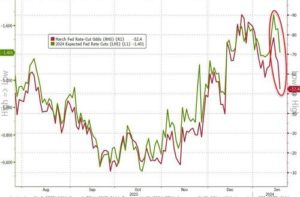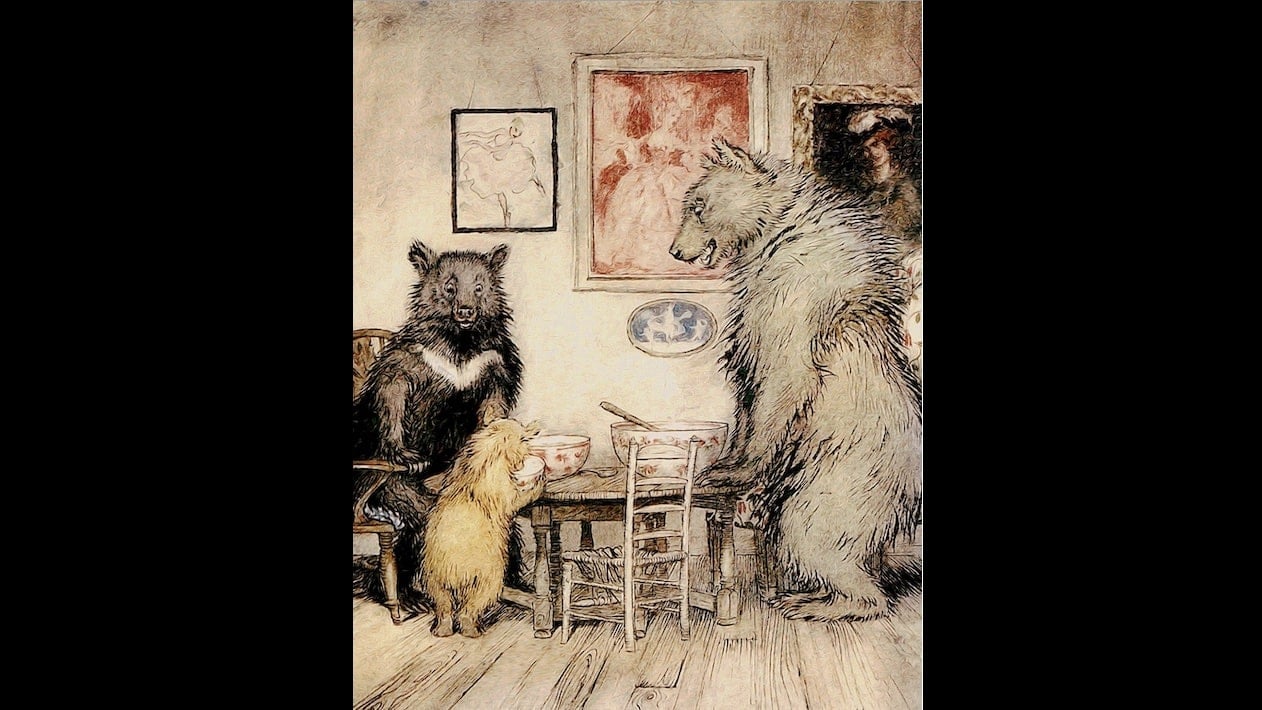(Money Metals News Service) The mainstream psyche has latched onto a Goldilocks scenario where inflation dies, interest rates fall, and the economy glides to a soft landing.
People should probably read the end of the story because Goldilocks dies.
Also – it’s a fairytale.
When they hear the name Goldilocks, most people think of porridge and a little girl’s quest for the “just right” bowl. As a result, Goldilocks is generally associated with the ideal.
In the Goldilocks economic scenario, the Federal Reserve wins the inflation fight. It cuts interest rates and eases pressure on corporations, consumers, and governments all buried in debt, and the economy never dips into a recession.
The Fed is the hero in this story.
In a recent interview, economic commentator Jim Grant said he thinks Jerome Powell and other members of the Federal Reserve look in the mirror and see themselves as Captain Chesley Burnett “Sully” Sullenberger who landed a crippled U.S. Airways jet on the Hudson River.
The Fed has arrogated to itself the role of central planning agency. … It’s going to try to balance economic growth with the stability and integrity of the currency. How do they do that? I don’t think it’s given to mortal man and woman to do these things.
And as Grant said in an interview last summer, “He’s a nice guy, Jay Powell, but I think he is not Sully.”
And as I’ve already mentioned in the original Goldilocks story written by Eleanor Mure in 1831, the bears throw Goldilocks in a fire, then douse her with water and finally impale her on the church steeple.
All of this is to say maybe the mainstream should give up on the Goldilocks fairytale.
An Economic Reality Check
Occasionally, the mainstream gets a dose of reality.
On Wednesday (Jan. 17) gold was pressured to a one-month-plus low when, as a ZeroHedge headline put it, “Goldilocks Reality-Check Wrecks Dovish Dreams.”
The reality check was stronger than expected economic data, including better-than-expected retail sales report, unexpected homebuilder optimism, and higher than projected industrial production.
We live in an upside-down world where good economic data is bad news. That’s because the mainstream wants the Federal Reserve to think the economy is slowing so it will pull back interest rates.
Why?
Because everybody knows deep down that easy money is the mother’s milk of the economy.
The recent run of “strong” data along with recent comments by Federal Reserve Governor Chris Waller dampened rate cut hopes. As ZeroHedge put it, “Nothing there screams ‘six rate-cuts or we all die’ as the issue remains: the current growth trajectory of the economy does not suggest that rates need to come down at all.”
The December CPI report showing price inflation remains well above the 2 percent target reinforces this reality check.
Indeed, the market expectation of a quick rate-cutting cycle has dropped precipitously this week.

Waller reinforced market fears on Tuesday when he delivered a speech at The Brookings Institution, and it was widely perceived to be a bit hawkish. Hawkish means that the Fed might not deliver the desperately sought-after rate cuts as quickly as hoped. That prospect sends traders into a panic.
Waller said he does not see the need for aggressive cuts priced into the market. In other words, he was cautioning that you probably shouldn’t be banking on cuts right now.
When the time is right to begin lowering rates, he said, I believe it can and should be lowered methodically and carefully. With economic activity and labor markets in good shape and inflation coming down gradually to 2 percent, I see no reason to move as quickly or cut as rapidly as in the past.
All of this put upward pressure on bond yields and the dollar. 10-year Treasuries crept higher up four basis points to 4.10 percent on Wednesday.
The prospect of higher-for-longer interest rates pressured gold down to close to $2,000 per ounce. It also drove a stock market selloff with the Dow Jones falling 94 points and the NASDAQ shedding .59 percent.
A Reality Check for the Reality Check
The market is panicking needlessly. It’s going to get its rate cuts.
But it’s not going to get the Goldilocks fairytale.
The Federal Reserve isn’t going to cut rates because inflation is beat. (Although it will probably try to spin it that way.) The Fed is going to cut rates because something breaks in the economy due to the high interest rates. I’m talking about an economic collapse or a financial crisis.
You’re probably thinking, but Mike, you just said the economic data looks good. How can you be talking about an economic collapse or a financial crisis? Everything is fine.
Yes. The economic data looks fine now. But the central bank broke things a long time ago. It just hasn’t reared its ugly head – yet.
History serves as an excellent teacher.
Interest rates are at the same levels as they were in 2006. That led to the Great Recession. After more than a decade of zero percent interest rates and trillions of dollars in money creation, there is even more debt and malinvestment in the economy now than there was then. If rising rates broke the economy and led to the Great Recession then, what makes anybody think things will be different this time around? Why should we expect a “soft landing?”
But it’s important to remember the economy doesn’t manifest the impacts of monetary policy in a day. It’s not like the Fed throws some rate hikes in the microwave and boom, out pops a fully cooked meal.
The Fed maxed out its hiking cycle prior to the Great Recession in 2006. Everything was fine. It started cutting interest rates in 2007. Everybody said everything was fine. Sure, there were some issues in the subprime housing market. But those problems were “contained.”
The financial crisis didn’t pop off until the end of 2008.
Now the fact is, the economy wasn’t fine in 2006. It was broken thanks to the previous run of artificially low interest rates.
And the economy isn’t fine today – no matter what the data indicates.
The ugly truth is the Fed broke this economy starting way back in 2008 when it kicked off more than a decade of zero percent interest rates. (You could argue it happened even earlier leading up to the dot-com crash.)
If (when) the economy does crash and there is some kind of financial crisis, the Fed will cut rates back to zero and it will relaunch quantitative easing. In other words, it will go right back to creating inflation. That’s the fork the Fed knows. History tells us it won’t hold the line against inflation during an economic crisis.
So, the mainstream will get its cuts.
But it won’t get the happy Goldilocks ending it imagines.
Grant summed up the likelihood that the Fed can get things “just right” in that interview over the summer.
It won’t.
I confess that is partly my temperament. I’m just not equipped to conceive the Fed might, in all of its error-laden ways, finally stick it. … I think that the distortions created by these rates, and by the expectation of Fed intervention, have been so widespread and so deep that its highly unlikely that this is the extent of the correction for those things.

